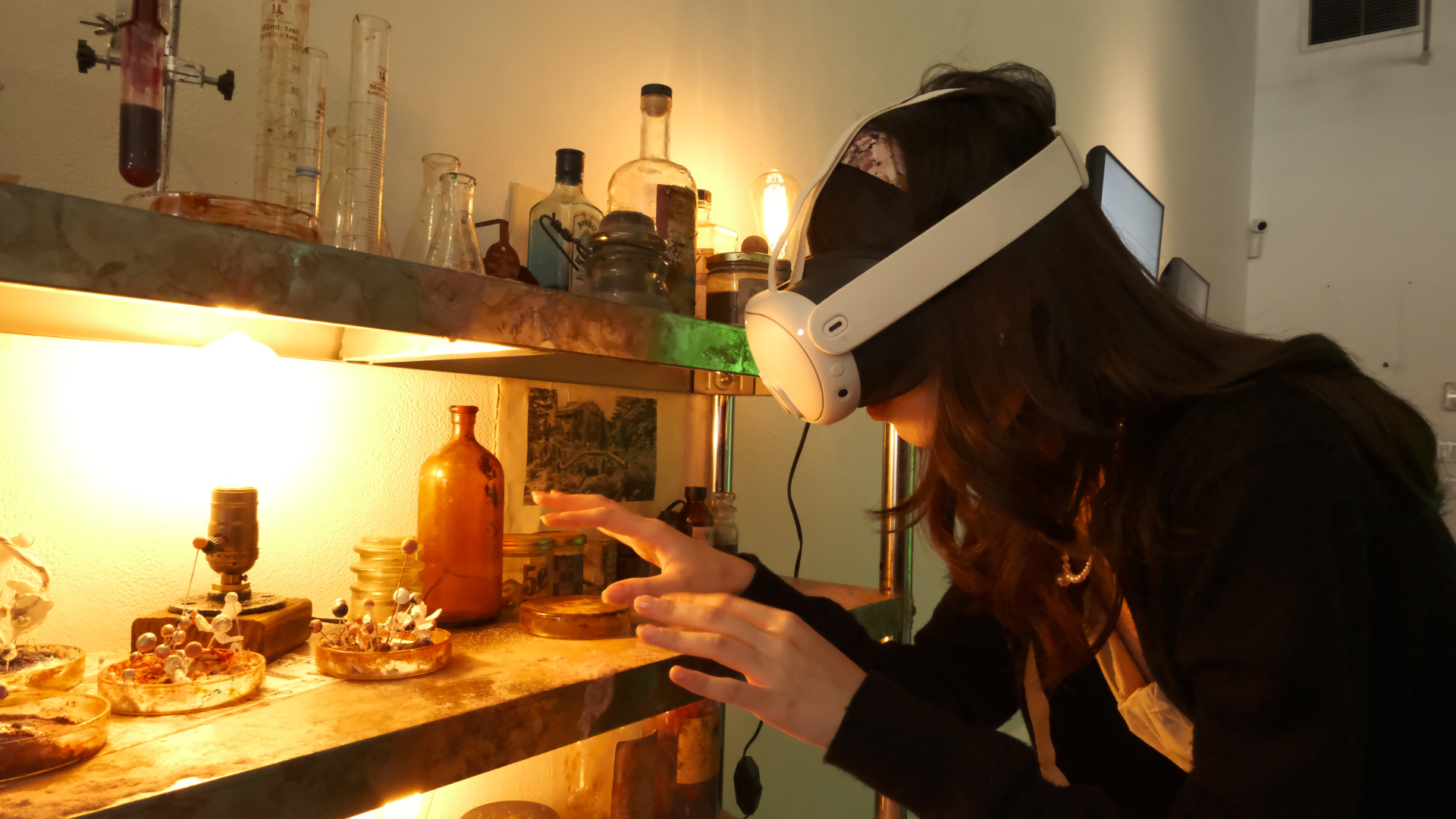
Echo of Ruins
an immersive VR experience about the past and future of co-evolution life between human and nature.
Final Delivery
Statement
Humans must mourn the past while building new relationships from the ruins.
"In the new earth, we are not alone.
The wind brings us messages, and I live next to the thorn."
Influence
 Tree roots invite us back into the ecosystem
Tree roots invite us back into the ecosystemThijs Biersteker, Stefano Mancuso
ECONTINUUM uses the scientific data of tree communication to mimic the electric and chemical chatter of trees and invites the audience into their conversation.
These giant transparent root networks can measure the air quality, and the humidity in the room, and communicate based on these biometric messages, sending warning signals and sharing nutrients to keep each other in balance.
The sensors in the work absorb the visitor's behavior into the tree conversation, enabling the work to gain lessons from its visitors. To let the visitors learn the beauty of a possible continuum into a symbiotic future with nature.
Concept Map

Challenges
How should I adapt to the constantly changing ideas? This is perhaps the greatest challenge I faced in my thesis project. The initial prototype was completely different from the final delivery. As I continued learning, and visiting different museums and galleries, my thoughts and inspirations kept evolving, forcing me to revise, refine, and even abandon earlier models and completed installations to present my concepts more effectively.
Design

 I developed VR in Unity, where I used the hand instead of the actual controller as a control factor in the VR effects, and programmed in c#.
I developed VR in Unity, where I used the hand instead of the actual controller as a control factor in the VR effects, and programmed in c#.Preview of Exhibition
